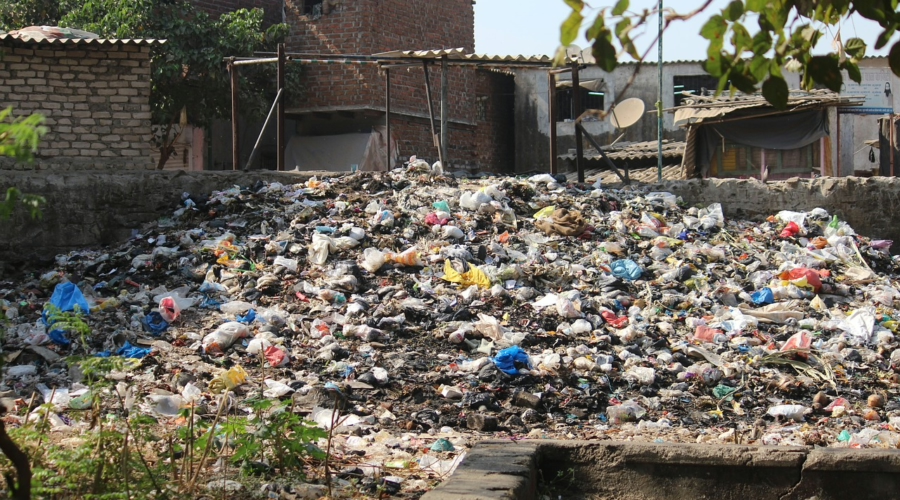Municipality’s Neglect: A Health Hazard in Our Backyards
When municipalities fail to address public safety concerns, communities bear the brunt of the consequences. In this hypothetical scenario, we examine what could happen if a backyard hazard like an old swimming pool, filled with garbage and infested with vermin, were left unaddressed. This example highlights the risks and outlines what should be expected from municipal authorities if such a case were reported.
The Hypothetical Hazard
Imagine a backyard containing an abandoned swimming pool. Over time, it has been repurposed as an unofficial dumping ground, accumulating garbage, rubble, and stagnant water. This site has become a breeding ground for disease-carrying pests like rats and mosquitoes, posing significant health and environmental risks to the surrounding community.
Although fictional, this scenario underscores the critical role of municipalities in preventing and mitigating such hazards.
Expected Municipal Response
If a municipality were to become aware of such a case, here’s how the situation should be handled in compliance with relevant bylaws and national legislation:
- Verification
- The municipality should conduct an inspection of the property to confirm the existence of the hazard and assess the associated risks.
- Notification
- A formal notice must be issued to the property owner, detailing the violations of municipal bylaws, such as the Property Maintenance By-law:
- Section 3.1: “All property owners shall maintain their properties in a safe and tidy condition, free from any nuisance or hazard.”
- Section 3.2: “No person shall accumulate or permit the accumulation of refuse, rubble, or other waste materials on any property.”
- A formal notice must be issued to the property owner, detailing the violations of municipal bylaws, such as the Property Maintenance By-law:
- Remediation Order
- The notice should include clear instructions for the property owner to rectify the issue within a specified timeframe, such as cleaning the site, removing waste, and addressing pest infestations.
- Enforcement Action
- If the property owner fails to comply, the municipality must escalate the matter by:
- Issuing fines or penalties under the Property Maintenance By-law.
- Taking direct action, such as cleaning the site and billing the property owner for the costs.
- Prosecution under national legislation, such as the National Building Regulations and Building Standards Act, which requires properties to be maintained in a manner that ensures a safe and healthy environment (Section 4).
- If the property owner fails to comply, the municipality must escalate the matter by:
- Monitoring and Follow-Up
- Regular inspections should ensure compliance and prevent the recurrence of similar hazards.
Health and Environmental Risks
If a municipality neglects its duty to address such a hazard, the risks to public health and the environment can escalate:
- Public Health Risks
- Disease Transmission: Vermin such as rats can spread diseases like leptospirosis and hantavirus.
- Mosquito Breeding: Stagnant water serves as a breeding ground for mosquitoes, increasing the risk of diseases like malaria and dengue fever.
- Environmental Hazards
- Accumulated waste can harm local ecosystems, pollute groundwater, and contribute to environmental degradation, contravening the National Environmental Management Act (NEMA), which requires sustainable development and prevention of environmental harm (Section 28).
Accountability and Transparency
A municipality has a legal and ethical responsibility to act in cases like this hypothetical scenario. Key actions include:
- Transparency: Municipal authorities should keep the community informed of the steps being taken to address reported hazards.
- Record-Keeping: Accurate records of inspections, notices, and enforcement actions must be maintained.
- Public Awareness: Residents should be educated about the importance of property maintenance and the process for reporting potential hazards.
Failure to address these issues raises questions about municipal accountability and undermines public trust.
Conclusion
This hypothetical example illustrates the critical role of municipalities in safeguarding public health and maintaining community safety. If a municipality were to become aware of such a case, swift and decisive action would be necessary to rectify the hazard and hold the property owner accountable.
Recommendations for Municipal Action
- Proactive Monitoring: Conduct regular inspections of properties to identify potential hazards before they escalate.
- Clear Communication: Establish straightforward reporting mechanisms for residents and provide clear timelines for municipal responses.
- Strict Enforcement: Ensure that bylaws are enforced consistently, with appropriate penalties for non-compliance.
- Community Engagement: Educate residents on the importance of property upkeep and how to report issues effectively.
Relevant Legislation and Citations
- National Building Regulations and Building Standards Act
- Section 4: Requires properties to be maintained to ensure a safe and healthy environment.
- National Environmental Management Act (NEMA)
- Section 28: Imposes a duty of care to prevent environmental harm.
- Saldanha Bay Municipality Property Maintenance By-law
- Section 3.1: Obligates property owners to maintain properties in a safe and tidy condition.
- Section 3.2: Prohibits accumulation of refuse, rubble, or other waste materials on any property.
By fulfilling these responsibilities, municipalities can prevent backyard health hazards like the one in this scenario, protecting both public health and the environment.
#SmallTownZA #HopefieldCommunity #BehindTheScenes #LocalVoicesZA #SaldanhaBayDistrict #SouthAfricaRural #CommunityFirst


